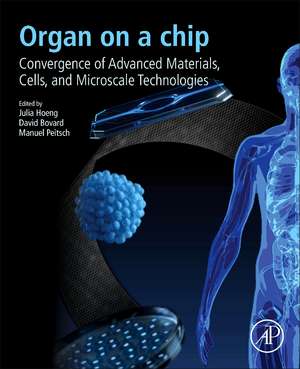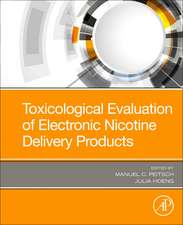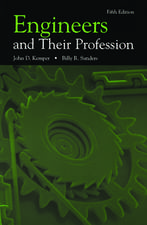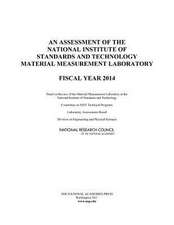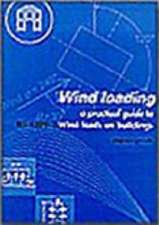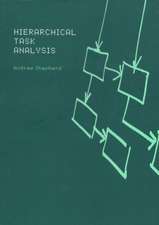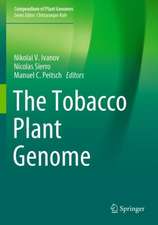Organ-on-a-chip: Engineered Microenvironments for Safety and Efficacy Testing
Editat de Julia Hoeng, David Bovard, Manuel C. Peitschen Limba Engleză Paperback – 11 noi 2019
Users will learn about the limitations of 2D in-vitro models and the available 3D in-vitro models (what benefits they offer and some examples). Finally, the MOC section shows how the organ on a chip technology can be adapted to improve the physiology of in-vitro models.
- Includes case studies of other organs on a chip that have been developed and successfully used
- Provides insights into functional microphysiological organ on a chip platforms for toxicity and efficacy testing, along with opportunities for translational medicine
- Presented fields (PK/PD, physiology, medicine, safety) are given a definition followed by the challenges and potential of organs on a chip
Preț: 827.40 lei
Preț vechi: 1056.42 lei
-22% Nou
Puncte Express: 1241
Preț estimativ în valută:
158.33€ • 169.30$ • 132.01£
158.33€ • 169.30$ • 132.01£
Carte tipărită la comandă
Livrare economică 11-25 aprilie
Preluare comenzi: 021 569.72.76
Specificații
ISBN-13: 9780128172025
ISBN-10: 0128172029
Pagini: 546
Ilustrații: Approx. 150 illustrations (150 in full color)
Dimensiuni: 191 x 235 x 28 mm
Greutate: 0.93 kg
Editura: ELSEVIER SCIENCE
ISBN-10: 0128172029
Pagini: 546
Ilustrații: Approx. 150 illustrations (150 in full color)
Dimensiuni: 191 x 235 x 28 mm
Greutate: 0.93 kg
Editura: ELSEVIER SCIENCE
Cuprins
1. Need for alternative testing methods and opportunities for organ-on-a-chip systems
2. Cell sources and methods for producing organotypic in vitro human tissue models
3. Organs-on-a-chip engineering
Part I Organ-on-a-chip platforms to model disease pathogenesis
4. Lung-on-a-chip platforms for modeling disease pathogenesis
5. Requirements for designing organ-on-a-chip platforms to model the pathogenesis of liver disease
6. Brain-on-a-chip systems for modeling disease pathogenesis
7. Kidney-on-a-chip
8. Heart-on-a-chip
9. Caenorhabditis elegans-on-a-chip: microfluidic platforms for high-resolution imaging and phenotyping
10. Gut-on-a-chip microphysiological systems for the recapitulation of the gut microenvironment
11. Computational pharmacokinetic modeling of organ-on-chip devices and microphysiological systems
Part II Multi-organs-on-a-chip platforms to mimic humans physiology
12. Design and engineering of multiorgan systems
13. 8.b. Human body-on-a-chip systems
14. Automation and opportunities for industry scale-up of microphysiological systems
15. How to build your multiorgan-on-a-chip system: a case study
2. Cell sources and methods for producing organotypic in vitro human tissue models
3. Organs-on-a-chip engineering
Part I Organ-on-a-chip platforms to model disease pathogenesis
4. Lung-on-a-chip platforms for modeling disease pathogenesis
5. Requirements for designing organ-on-a-chip platforms to model the pathogenesis of liver disease
6. Brain-on-a-chip systems for modeling disease pathogenesis
7. Kidney-on-a-chip
8. Heart-on-a-chip
9. Caenorhabditis elegans-on-a-chip: microfluidic platforms for high-resolution imaging and phenotyping
10. Gut-on-a-chip microphysiological systems for the recapitulation of the gut microenvironment
11. Computational pharmacokinetic modeling of organ-on-chip devices and microphysiological systems
Part II Multi-organs-on-a-chip platforms to mimic humans physiology
12. Design and engineering of multiorgan systems
13. 8.b. Human body-on-a-chip systems
14. Automation and opportunities for industry scale-up of microphysiological systems
15. How to build your multiorgan-on-a-chip system: a case study
Recenzii
"As a carnivore, when reading this text, I wondered if lessons learned from current attempts to “grow meat could be applied to some of the work herein. (See, for example, “The race to make cell grown meats mainstream, Popular Mechanics, July/August 2020, pp. 44–51.) As a (retired) design instructor, having had the experience of having had students working on organ-on-a-chip devices for their senior projects, I find this book to be very up to date and a good overview of the field. As a reviewer, I recommend this text for use in introducing new investigators and entrepreneurs to this field of applied work in physiology and toxicology." --IEEE EMBS PULSE Magazine
